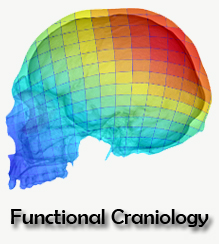 A group coordinated by Dr. Vera Weisbecker examined whether the evolution of mammalian brain partitions follows conserved developmental constraints, causing the brain to evolve as an integrated unit in which the partitions scale with brain size. According to this ‘late equals large’ hypothesis, the timing of neurogenesis predicts the size of the partition such that later and more extended neurogenesis produces larger partitions due to the production of more neural precursors. In order to investigate the impact of neurogenesis on patterns of brain partition growth, the volumes of the whole brain and major partitions were reconstructed from soft-tissue diceCT scans of three marsupial species, including individuals with ages ranging from 1 day to adulthood. They tested three hypotheses consistent with a conserved brain partition growth: H1 postulates that partition scaling during development reflects the evolutionary partition scaling, and thus growth patterns should be uniform between species; H2 assumes that a neurogenesis-driven pattern of partition scaling is predictable from adult brain size, i.e. brain partitions scale with brain size; and H3 states that growth with age might differ between species according to brain size and/or neurogenetic events. Regressions of log partition volume against log rest-of-the-brain volume (whole-brain volume minus partition volume) showed significant interspecific differences in slopes and intercepts of most brain partitions, indicating diverse scaling patterns between species, which could not be predicted by adult brain size, as the smallest-brained species had intermediate slope to the other two. Growth curves of log partition volume against age were similar in all partitions within-species, but differed between species, particularly in growth rates, with the species with intermediate brain size having slower rates than the other two. Differences in growth patterns do not seem to be related to neurogenetic schedule as largest partitions are not especially late in their development and important maturation processes, like eye opening, occur closer to the end of the growth phase. Thus, none of the hypotheses are supported by these results, challenging the conserved neurogenetic schedules behind the evolution of mammal brain partitions. Moreover, the authors found high phylogenetic signal in brain partition scaling, revealing that a large part of the scaling relationship between brain and partition volumes is explained by phylogeny, which is more in agreement with a mosaic evolution of brain partition sizes, stressing its biological meaning and the level of mammalian brain plasticity. However, the intraspecific regular partition growth curves led the authors to contemplate the existence of an early brain partition pattern regulated by regional gene expression, and propose that further studies of brain partition evolution should integrate developmental neuromere expression models, neuron density, and patterns of neuron migration.
A group coordinated by Dr. Vera Weisbecker examined whether the evolution of mammalian brain partitions follows conserved developmental constraints, causing the brain to evolve as an integrated unit in which the partitions scale with brain size. According to this ‘late equals large’ hypothesis, the timing of neurogenesis predicts the size of the partition such that later and more extended neurogenesis produces larger partitions due to the production of more neural precursors. In order to investigate the impact of neurogenesis on patterns of brain partition growth, the volumes of the whole brain and major partitions were reconstructed from soft-tissue diceCT scans of three marsupial species, including individuals with ages ranging from 1 day to adulthood. They tested three hypotheses consistent with a conserved brain partition growth: H1 postulates that partition scaling during development reflects the evolutionary partition scaling, and thus growth patterns should be uniform between species; H2 assumes that a neurogenesis-driven pattern of partition scaling is predictable from adult brain size, i.e. brain partitions scale with brain size; and H3 states that growth with age might differ between species according to brain size and/or neurogenetic events. Regressions of log partition volume against log rest-of-the-brain volume (whole-brain volume minus partition volume) showed significant interspecific differences in slopes and intercepts of most brain partitions, indicating diverse scaling patterns between species, which could not be predicted by adult brain size, as the smallest-brained species had intermediate slope to the other two. Growth curves of log partition volume against age were similar in all partitions within-species, but differed between species, particularly in growth rates, with the species with intermediate brain size having slower rates than the other two. Differences in growth patterns do not seem to be related to neurogenetic schedule as largest partitions are not especially late in their development and important maturation processes, like eye opening, occur closer to the end of the growth phase. Thus, none of the hypotheses are supported by these results, challenging the conserved neurogenetic schedules behind the evolution of mammal brain partitions. Moreover, the authors found high phylogenetic signal in brain partition scaling, revealing that a large part of the scaling relationship between brain and partition volumes is explained by phylogeny, which is more in agreement with a mosaic evolution of brain partition sizes, stressing its biological meaning and the level of mammalian brain plasticity. However, the intraspecific regular partition growth curves led the authors to contemplate the existence of an early brain partition pattern regulated by regional gene expression, and propose that further studies of brain partition evolution should integrate developmental neuromere expression models, neuron density, and patterns of neuron migration.
Sofia Pedro







Leave a comment